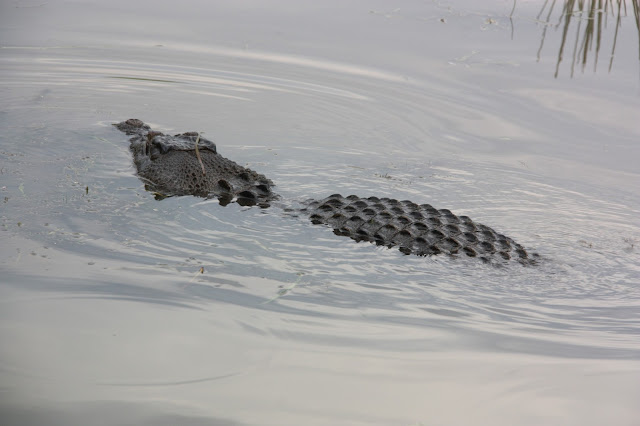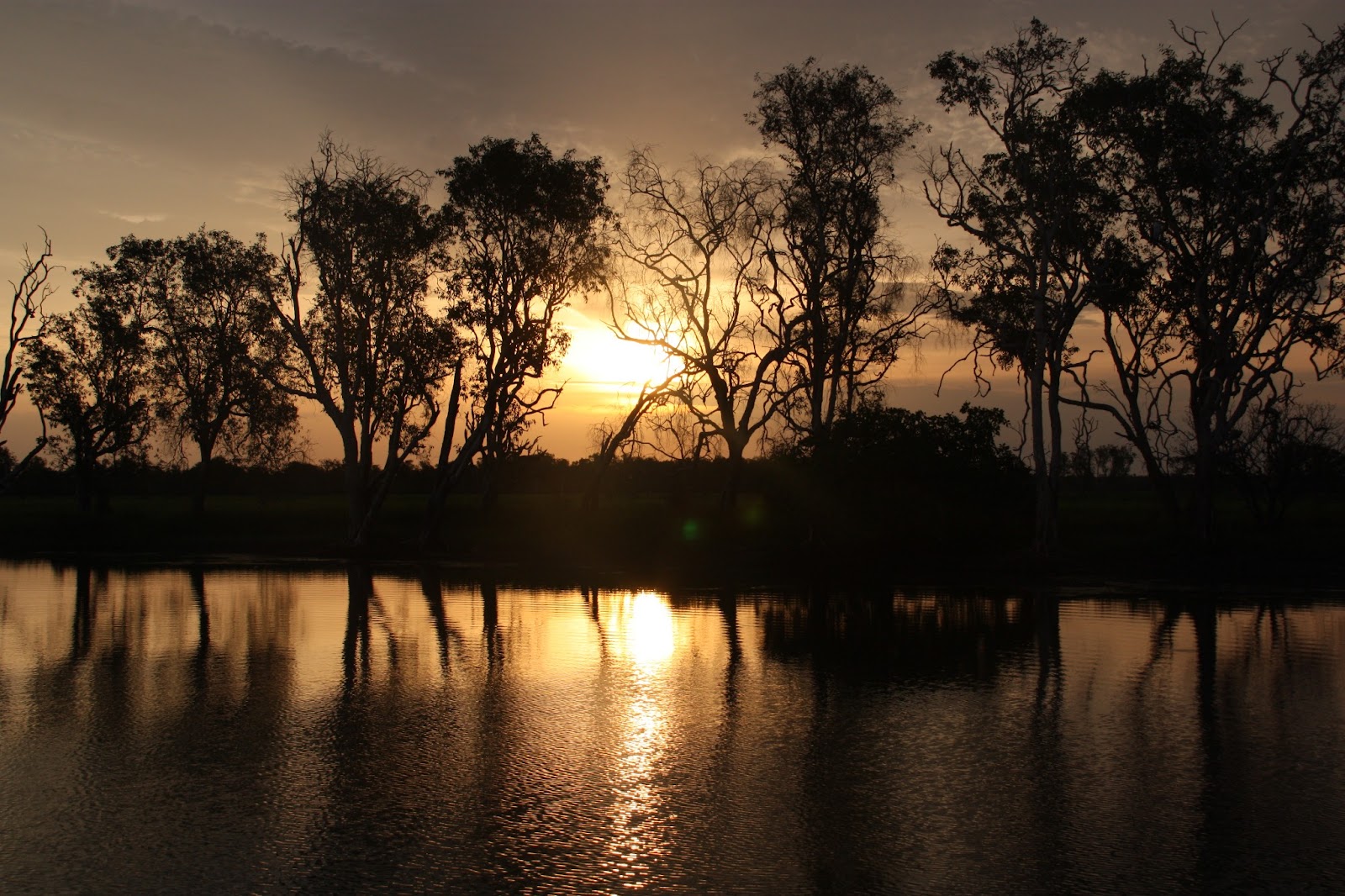Even being driven all day in searing heat, Sheila refused to overheat and the aircon continued to keep us comfortable. The only downside with all this driving is we were using large amounts of very expensive petrol, a fact we resolved to ignore. We stayed the night in Alice Springs and, rather than move on again the next day, spent the day in the nearby West Macdonnel ranges.
The day after we set off after a leisurely breakfast on the 550km road to Ulhuru. (And I thought it was really close to Alice?) We got there in plenty of time for the ubiquitous sunset photo opportunity:
Accomodation at Uluru is exclusively at the surprisingly-named Ayers Rock Resort nearby. It has a couple of overpriced hotels, a backpackers hostel, and a campground. We stayed at the campsite, and were able to tuck into the pizzas at the backpackers, and use the pool at the hotel. The next morning we got up early for the sunrise photo opportunity!
After having breakfast in the car we then set off on an 11k walk around the base of Uluru/Ayers Rock (delete as appropriate). Luckily we started early because by the time we finished it was sweltering. We had got into the habit of saying hello to other tourists in Australia and waving at people in cars that went past, mainly because they weren't many, and by virtue of having driven for hours to some godforsaken corner of Australia, you already have sonething in common. Uluru, being such an international icon, attracts a separate breed of tourists who think it strange that you are greeting them. Our friendly greetings were generally met with a stoney silence or a puzzled furrow of the brow. Another irritation was that the national park managers gave so much focus on the spiritual significance of Uluru and its human history, there was no mention of the science behind this geographical miracle, or the beautiful natural landscape surrounding it. Instead there were signs informing us that taking photos here and there was disrespectful. It would be fair enough if there were people there enjoying quiet spiritual contemplation, but sadly I saw no evidence of people anywhere around to be offended by my Canon. I must be missing the point.
 |
| Dust storm! |
The next day was our most boring drive yet, 750km from Uluru to Coober Pedy, stopping every 250km to top up with fuel. Entering Coober Pedy (where they filmed Mad Max) was an amazing experience. A real outback pioneer town, lying around everywhere were the relics of decades of ad-hoc opal mining efforts, from big piles of excavated rock to abandoned vintage machinery. A lot of the people here live underground to escape the oppressive 40°C heat. It was an appropriate and very welcome place for our first proper bed in weeks, at the blissfully cool and quiet Underground B&B.
 |
| Opal mining equipment |
 |
| Our underground room for the night |









































































